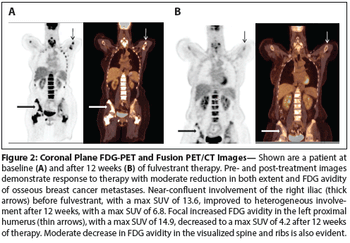
Medicare’s payment system for cancer care services should be restructured to focus on value over volume and offer incentives for providing high-quality, patient-centered care.

Your AI-Trained Oncology Knowledge Connection!


Medicare’s payment system for cancer care services should be restructured to focus on value over volume and offer incentives for providing high-quality, patient-centered care.

As part of our coverage of ASCO's Annual Meeting, we discuss the role of chemotherapy in prostate cancer, as well as study results on novel targeted approaches and agents in development for prostate cancer that will be presented at the meeting.

Take a minute to recall those patients who showed up in the emergency room without your knowledge, or who died 1 week after starting a new treatment, or whom you neglected to enroll in hospice. In each scenario the cost of their care rose without a corresponding increase in value. I’ve listed some behavioral skills that have a chance to prevent unnecessary expense.

This slide show features 8 ways oncologists can create value in cancer care, from building a great team of staff members to staying on top of the latest developments in your field.

In this interview we discuss outcomes in clinical trials and how to improve trials by redefining clinically meaningful outcomes.

To ultimately find what we are actually looking for, the invasive malignant nodule in a haystack of benign lesions, new strategies and qualitative and quantitative tools are needed to propel noninvasive evaluation of solitary pulmonary nodules into the 21st century.

What distinguishes those practices that are successful in their use of the EMR is their commitment to the product and their recognition that it is the central element in the treatment of their patients.

Researchers at the Moffitt Cancer Center have created a computational model to simulate the bone metastasis process and to predict the outcomes of specific prostate cancer therapies.

The number of lesions detected with low-dose CT, only some of which are early cancers, is so great that algorithms are being developed for more efficient evaluation and management of solitary pulmonary nodules. This article will discuss current tools, approaches, and concerns regarding patient care in this setting.

We review how radiolabeled glucose and estrogen analogs can be used in breast cancer patients. We focus this review on the application of positron emission tomography imaging to ER-positive metastatic breast cancer as an example of how imaging can guide breast cancer treatment.

The simple answer, according to some, is that lung cancer screening’s time has come. However, in my opinion, the answer is not that simple.

Implementation of a national lung cancer screening program using low-dose CT will identify almost 55,000 additional lung cancer cases over 5 years, but will add $9.3 billion to Medicare expenditures.

A meta-analysis of over 15,000 patients with liver cirrhosis who were diagnosed with hepatocellular carcinoma demonstrates the benefit of screening these patients for liver tumors.


With the goal of helping to standardize and optimize care, ASCO has issued two new clinical guidelines on treating patients with HER2-positive breast cancer.

Oncologists are always queried about how to “eat better so my cancer doesn’t come back.” I have found the most common food issue to be the role of soy in the diet, particularly for hormone-driven breast and prostate cancer patients.

Cancer patients who are of reproductive age (especially women) can be a challenge to treat when it comes to fertility, birth control during treatment, and treatment administration during pregnancy. And for women diagnosed with cancer during pregnancy, safe treatment options need to be considered.

With the boom of technological advances and the increased use of social media come the potential ethical issues surrounding patient privacy and confidentiality.

Physicians can help older women make informed mammography decisions by taking into account life expectancy and the harms and benefits of breast cancer screening.

This appendix highlights selected websites that are developed especially for oncology professionals, researchers, and patients with cancer.

ASCO has released guidelines for the prevention and management of symptoms such as anxiety, depression, fatigue, and neuropathies, which affect many cancer survivors.

Results from two large cohorts indicated that increasing blood pressure levels were associated with an increased risk for developing kidney cancer among both men and women.

The FDA has approved an HPV DNA test to be used as a primary screening method for cervical cancer in women 25 and older. The test can also give insight into future risk of cervical cancer.

Although e-cigarettes are being put forward as a safer alternative that delivers nicotine without carcinogens and assists smokers to quit, I remained concerned that evidence suggests the products are marketed for purchase and use by children. How else can one explain brands featuring flavors like Gooey Butter Cake, Snicker Doodle, Extra Sweet Cotton Candy, Bananalicious, and-the most outrageous-Gummi Bear.

This slide show features some of the highlights from the 105th Annual Meeting of the American Association for Cancer Research (AACR).

This slide show includes highlights from the 2014 Society of Gynecologic Oncology annual meeting, including one study showing bariatric surgery could lower the risk of uterine cancer, and another that found a PARP inhibitor active in BRCA-positive ovarian cancer.

Men who used sildenafil (Viagra) had an 84% increased risk for developing melanoma, even after adjusting for known risk factors, according to the results of a prospective study.

There is no question that radiopharmaceuticals have a role in the management of patients with metastatic bone disease. There is also no question that fractionated external beam radiotherapy (EBRT) is highly effective and generally well tolerated when delivered with large open or focal fields.

In order to achieve maximum survival of patients with metastatic castration-resistant prostate cancer, the judicious use of all available effective agents and modalities is required. Both EBRT and radium-223 are effective at relieving pain, but both may decrease bone marrow function.

As new data and new treatment options emerge, palliative radiotherapy algorithms will need to undergo continuous modifications and updates to ensure that patients receive optimal symptom relief.